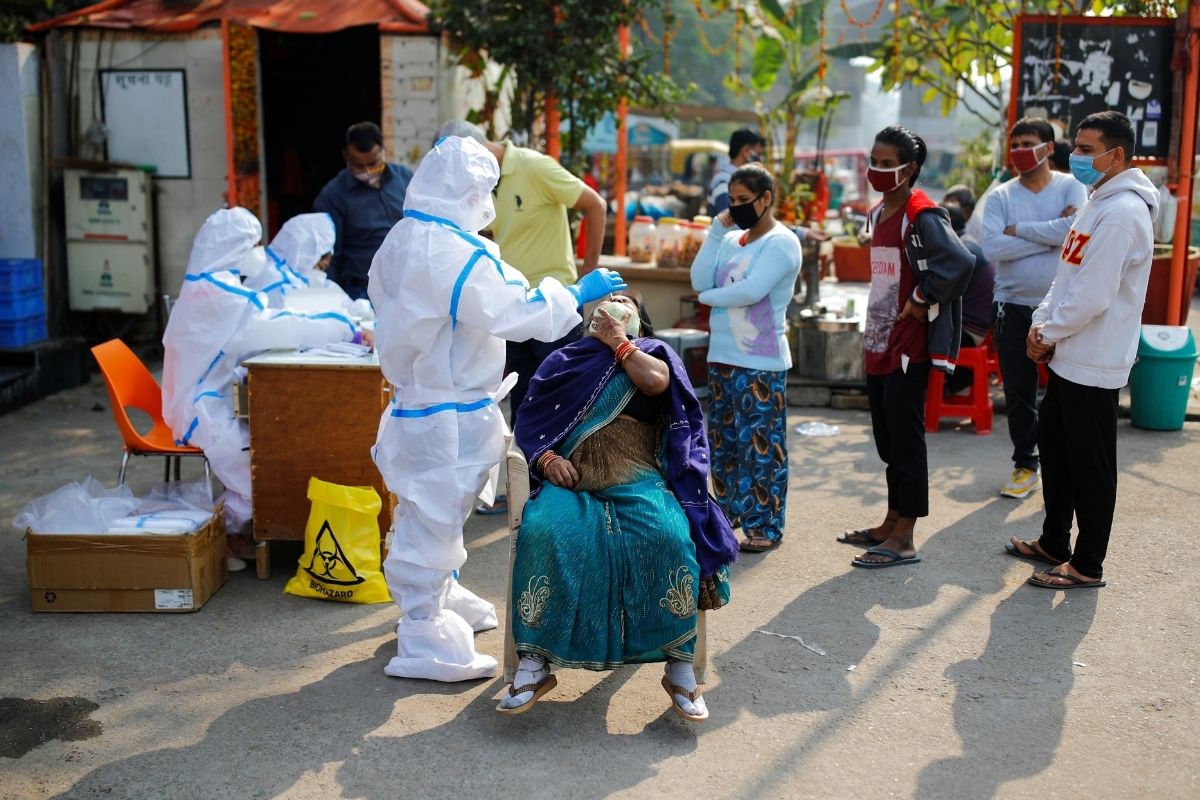Rise in Infections Due to ‘Stochastic Spread’ of Coronavirus in India: Experts
The Union Ministry of Health and Family Welfare informed on Saturday that a few states are witnessing an upsurge in the number of new Covid-19 cases reported daily for the last one week. While Kerala and Maharashtra continue to report a surge in cases, a trend of rise in infections is also observed in Punjab, Chhattisgarh and Madhya Pradesh.
As per the ministry’s seven-day average data, 259 new cases were recorded in Chhattisgarh in the last 24 hours, marking a rise of 30 cases in a week. Similarly, Madhya Pradesh also witnessed a spike and reported 297 new cases in the last 24 hours. The state had reported 194 cases a week ago on February 14.
Meanwhile, Punjab also showed a sudden spike in the past one week. On February 14, cases reported there were 260 which have risen to 383 in the last 24 hours.
However, two states — Maharashtra and Kerala — continue to contribute majorly to the infection tally. These two states recorded 75.8 per cent (10,617) of the total cases (13,993) in India reported in the last 24 hours — 6,112 in Maharashtra and 4,505 in Kerala.
Rajeev Jayadevan, scientific advisor and former president of the Indian Medical Association, said that the variations in cases were expected in the country given how viruses behave in a large geographical area.
“India is a vast country and given its geographical entity, we cannot expect uniformity in virus spread across the length and breadth of the nation. Pandemic occurs and impacts differently as far as geography is concerned. The role of the people and their conduct play a large role in mapping the spread,” he said.
Jayadevan also said that what India is witnessing could be called a “Stochastic spread” of the novel coronavirus, where no uniformity in daily outcomes could be determined.
“It is like a mole on a slice of bread we see. It does not cover the whole slice, but sits on portions with uneven scatter,” he explained.
However, Jayadevan said that multiple reasons could be attributed to the sudden burst in daily infections, ranging from varied protocols in testing in states to the virus’s evolution.
“What we are seeing (rise in cases) could be an extent of testing, a rolling average of the number of tests happening in a week. Each state has a different protocol of testing asymptomatic patients, contact tracing after confirmed cases, screening in community and requirement of Covid negative certificate before performing surgeries on patients,” he said.
“Another reason could be complacency. It is certain that if individuals stretch their liberty (in terms of Covid appropriate behaviour), repercussions are bound to occur. This could also be a driving the sudden spurt at a few locations,” Jayadevan added.
However, he also asserted that a lot of misconceptions are reigning over the virus which needs clarification. “One thing about viruses is that human behaviour dictates their spread to an extent, but they do not behave as per human belief, will or expectation,” Jayadevan stated.
“A narrative was built that the pandemic is settling down given the continuous drop in daily infections. Many believed that the pandemic’s spread is bell shaped where we see an exponential rise followed by a plateau and then a steady fall in cases is seen. However, this pandemic in graphs shows mountain spikes where cases rise and fall and continue to. Many areas will continue to witness further waves,” he informed.
Prabhakaran Dorairaj, Director, Centre for Control of Chronic Conditions, Public Health Foundation of India (PHFI), also said that India’s case seems similar to countries where the pandemic was believed have to hit the herd immunity stage, but then a surge followed.
“What we can observe at this point is the similarity between the trend of infections in the UK, Germany and several other countries which thought that they had achieved the threshold or approaching the herd immunity stage. But then, the virus evolved. We have to see here (India) as well if any mutation in the virus is causing this,” he said.
“But it is too early to prove anything right now. So we have to wait a bit to arrive at any conclusion,” Dorairaj added.

